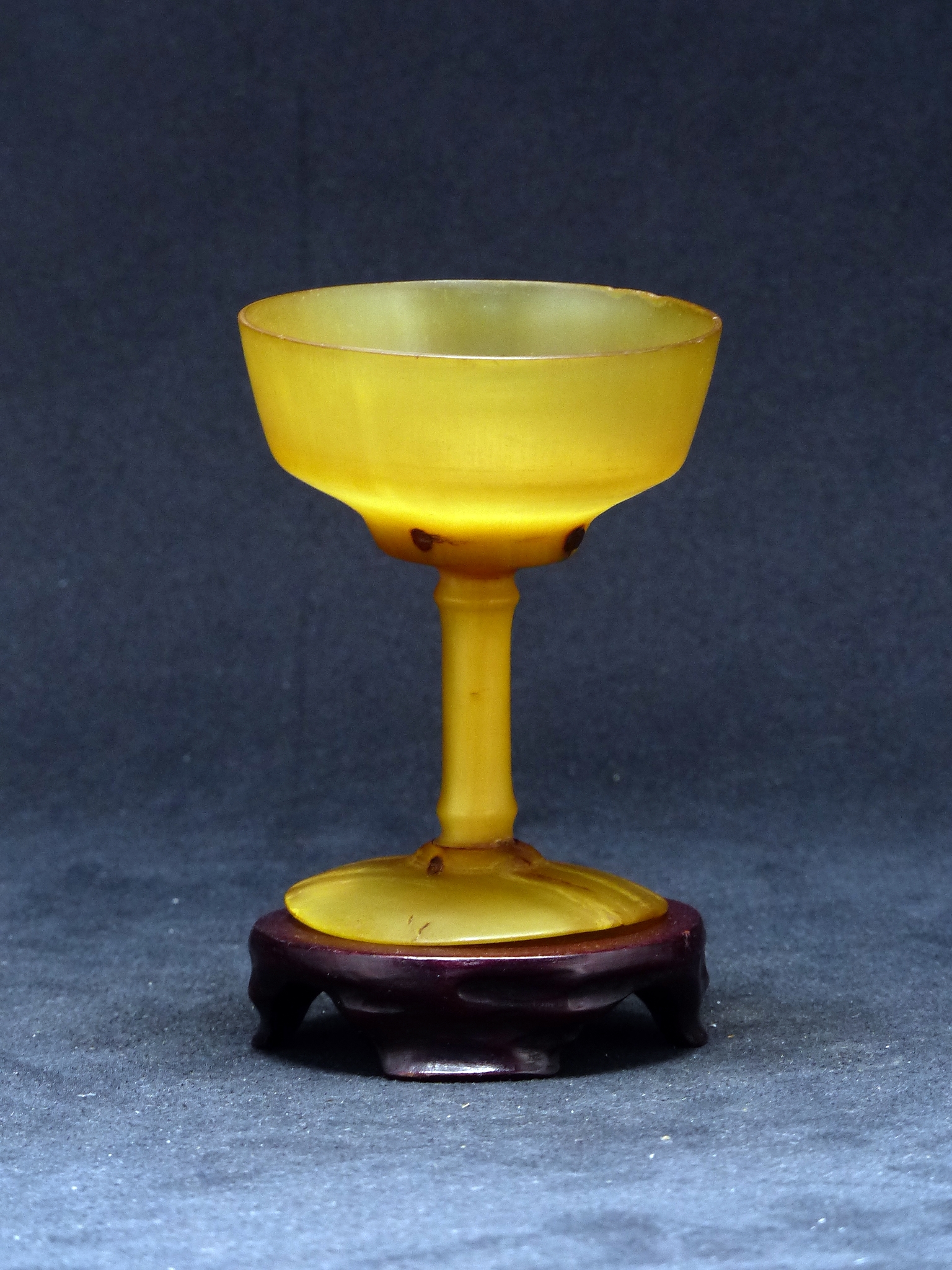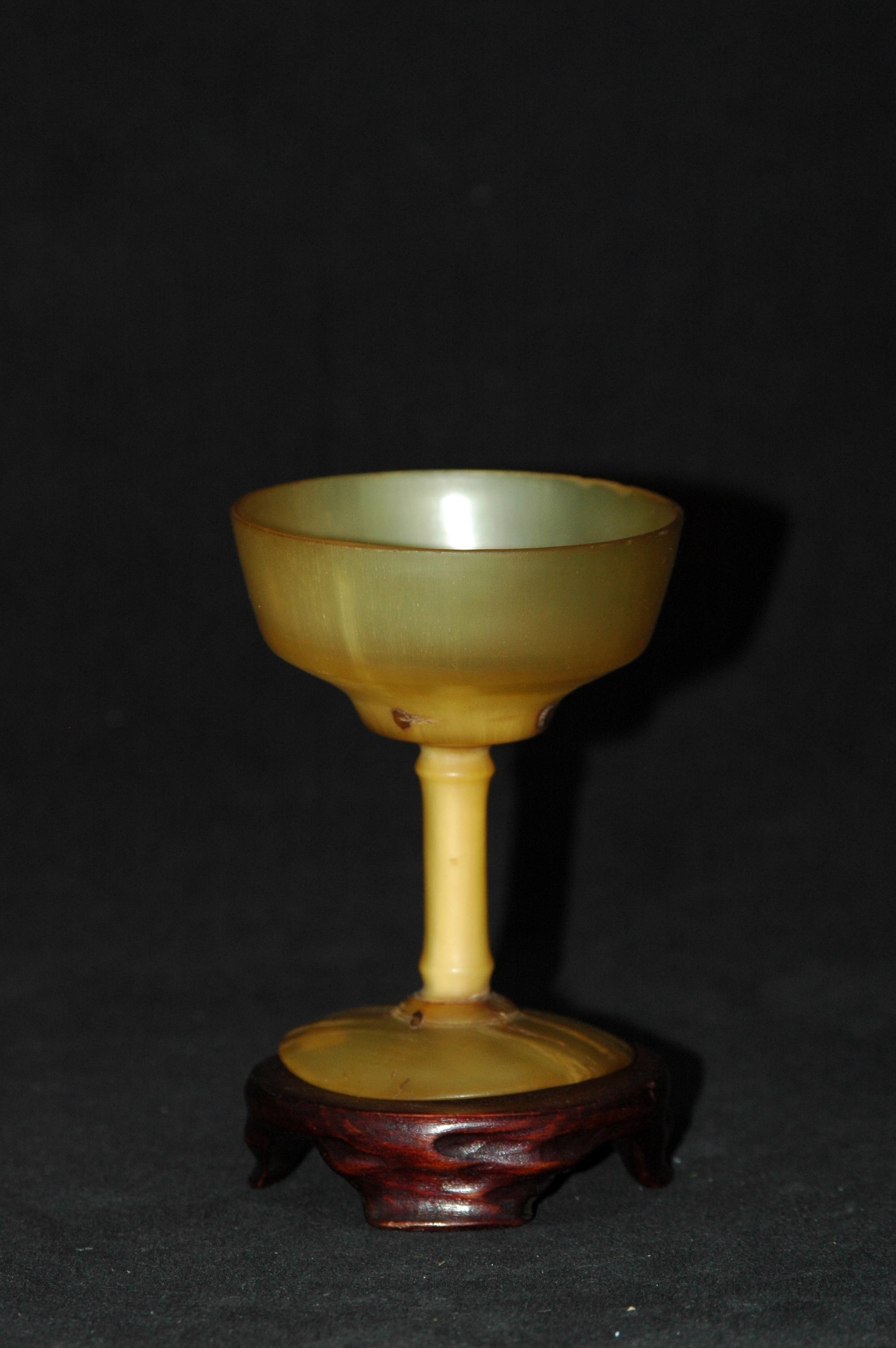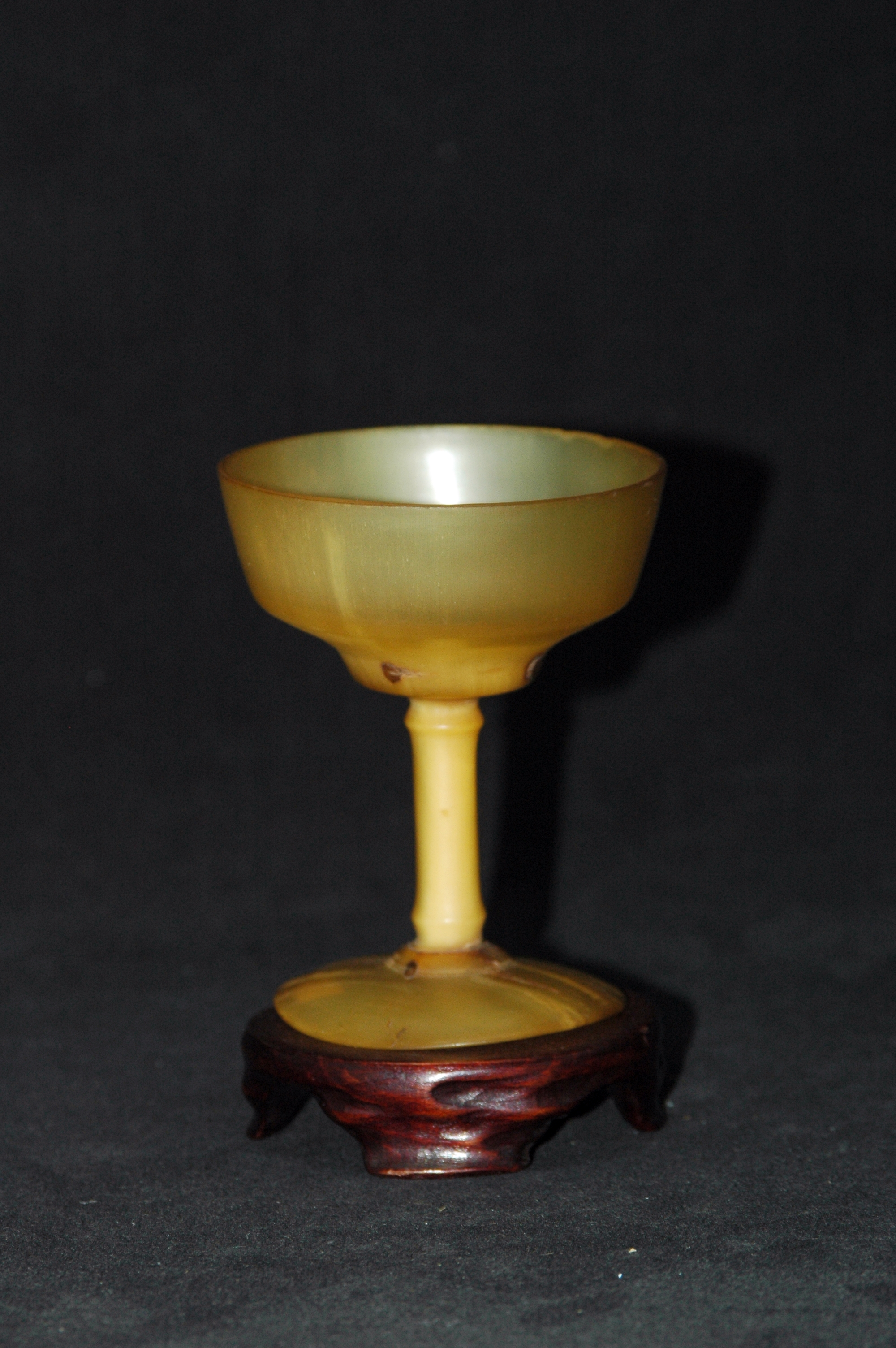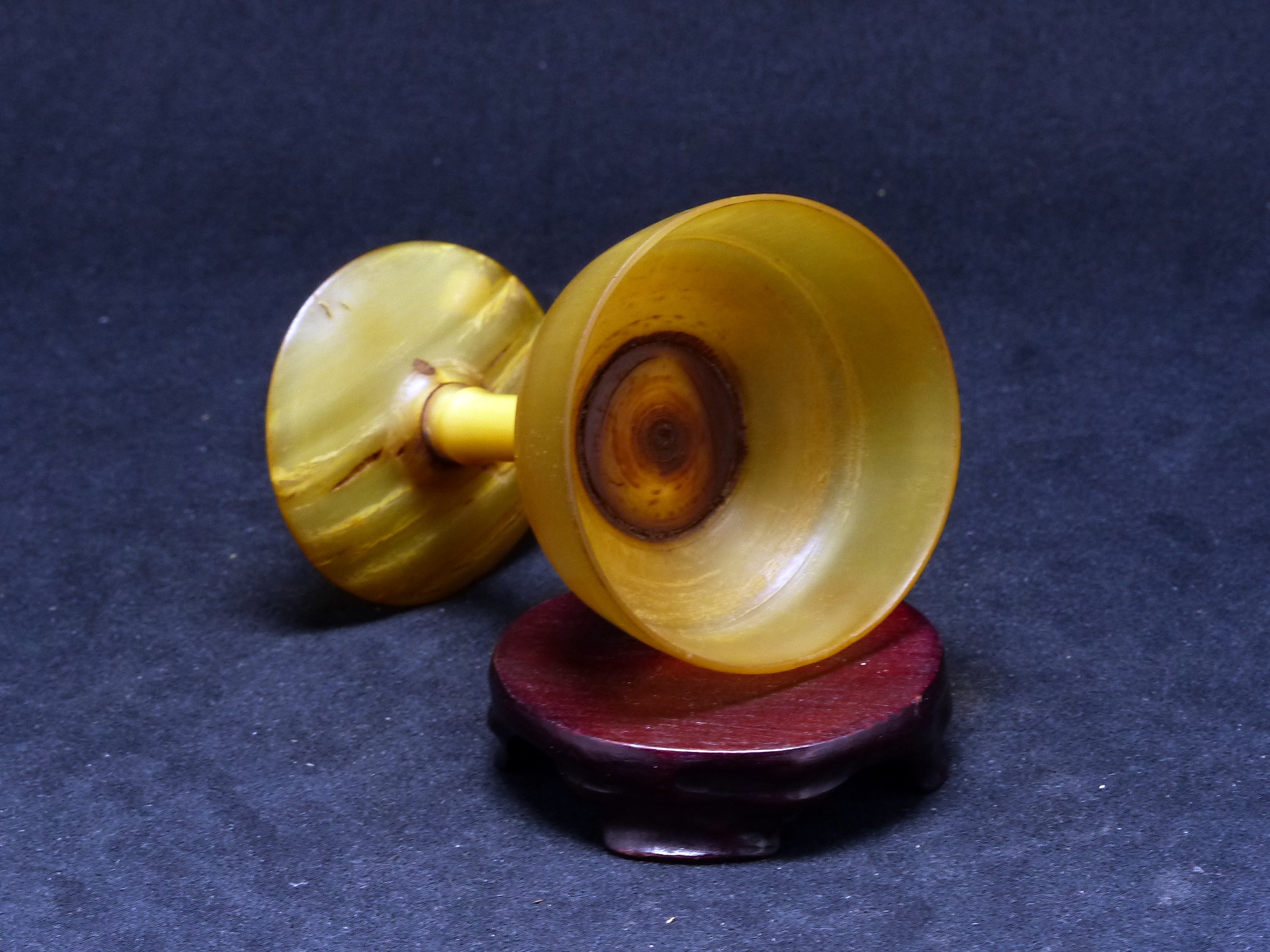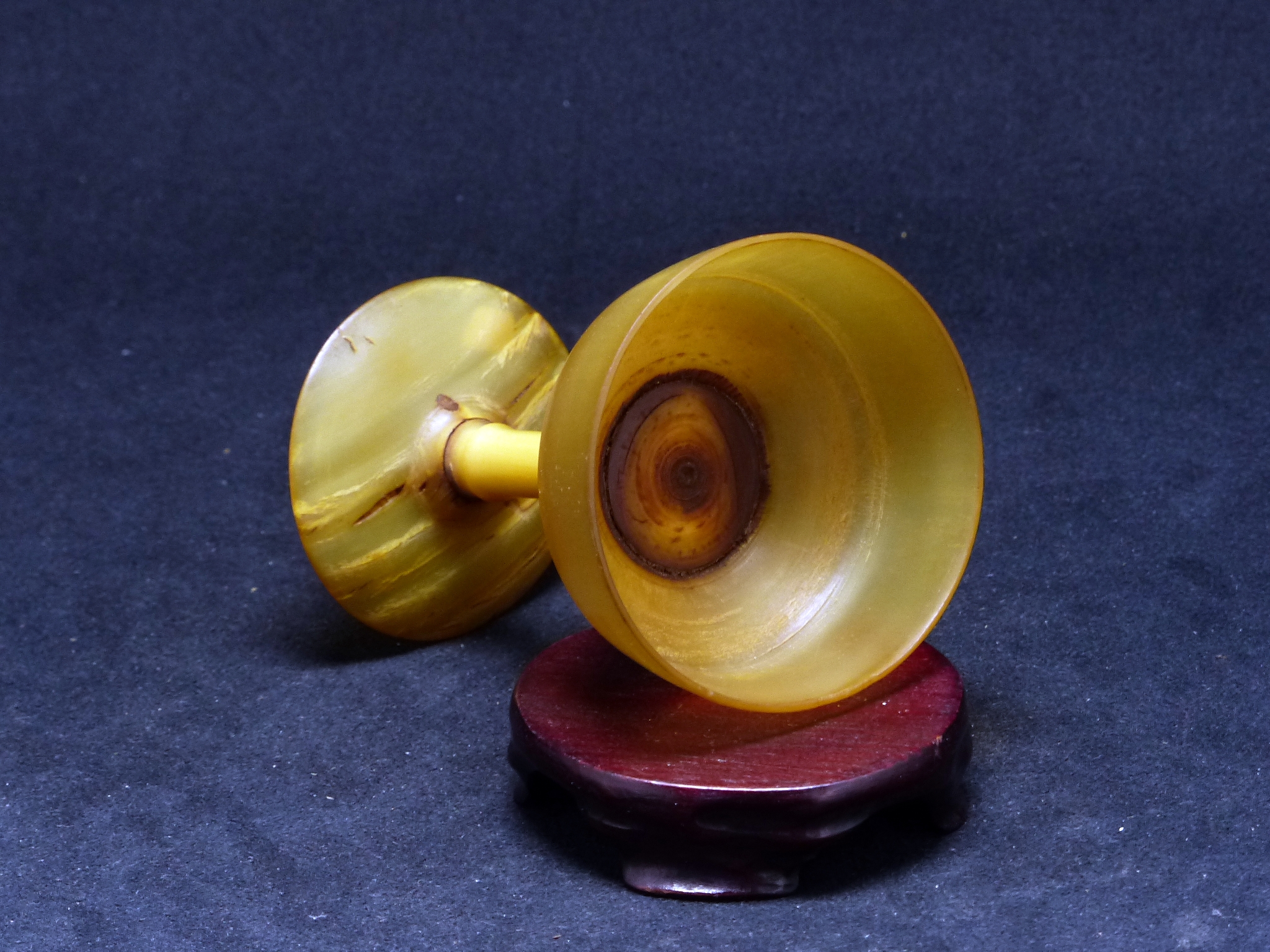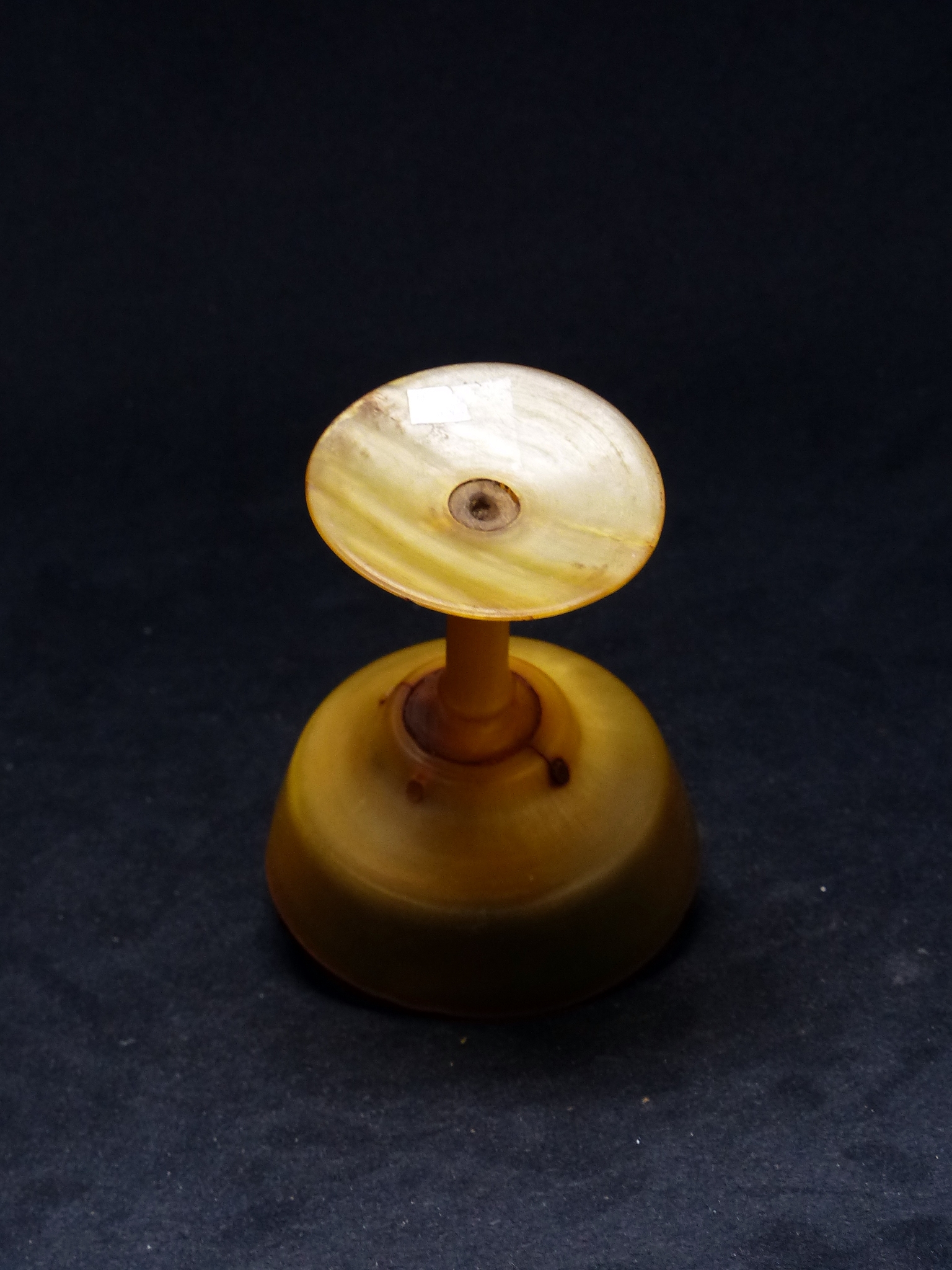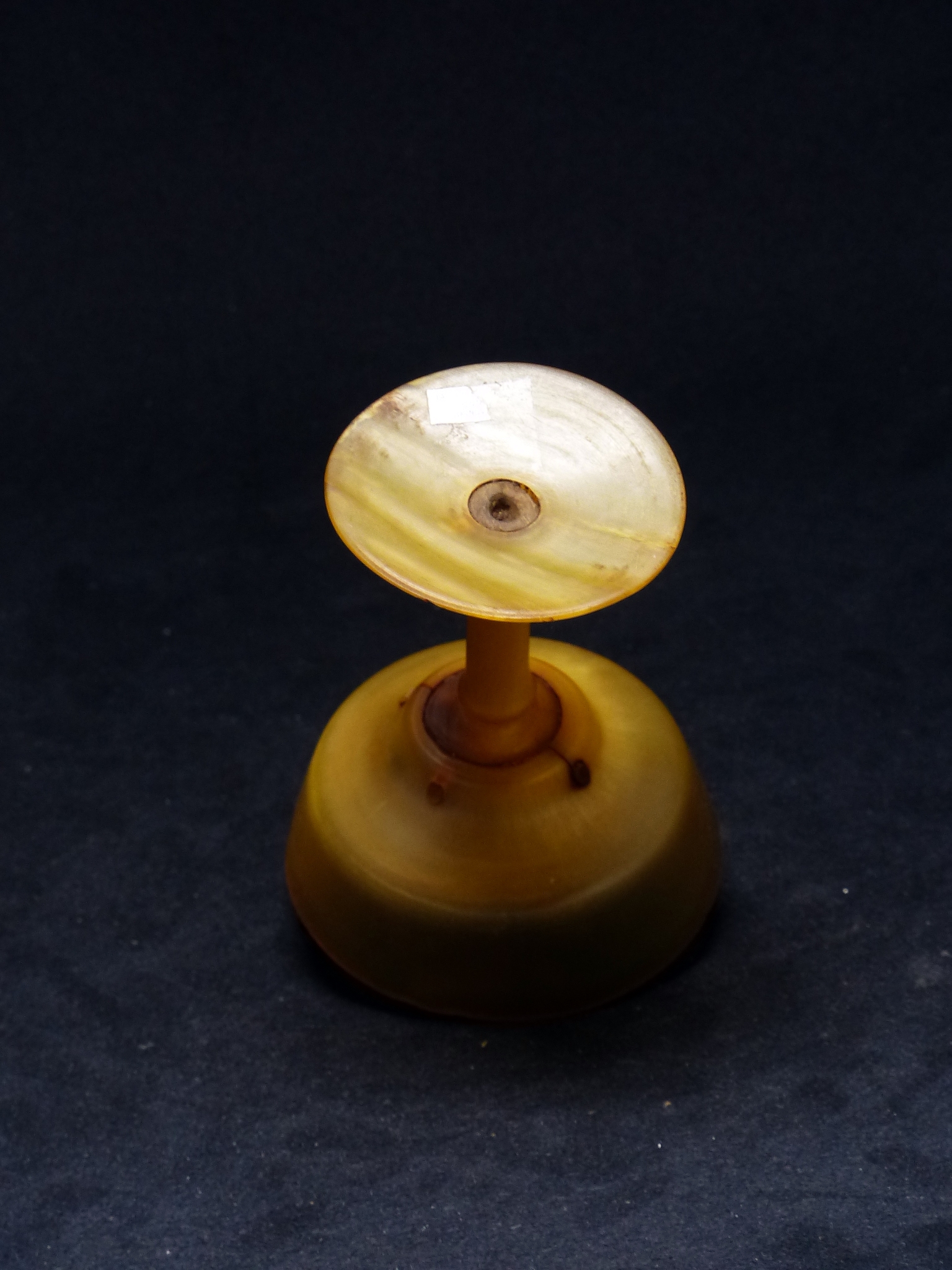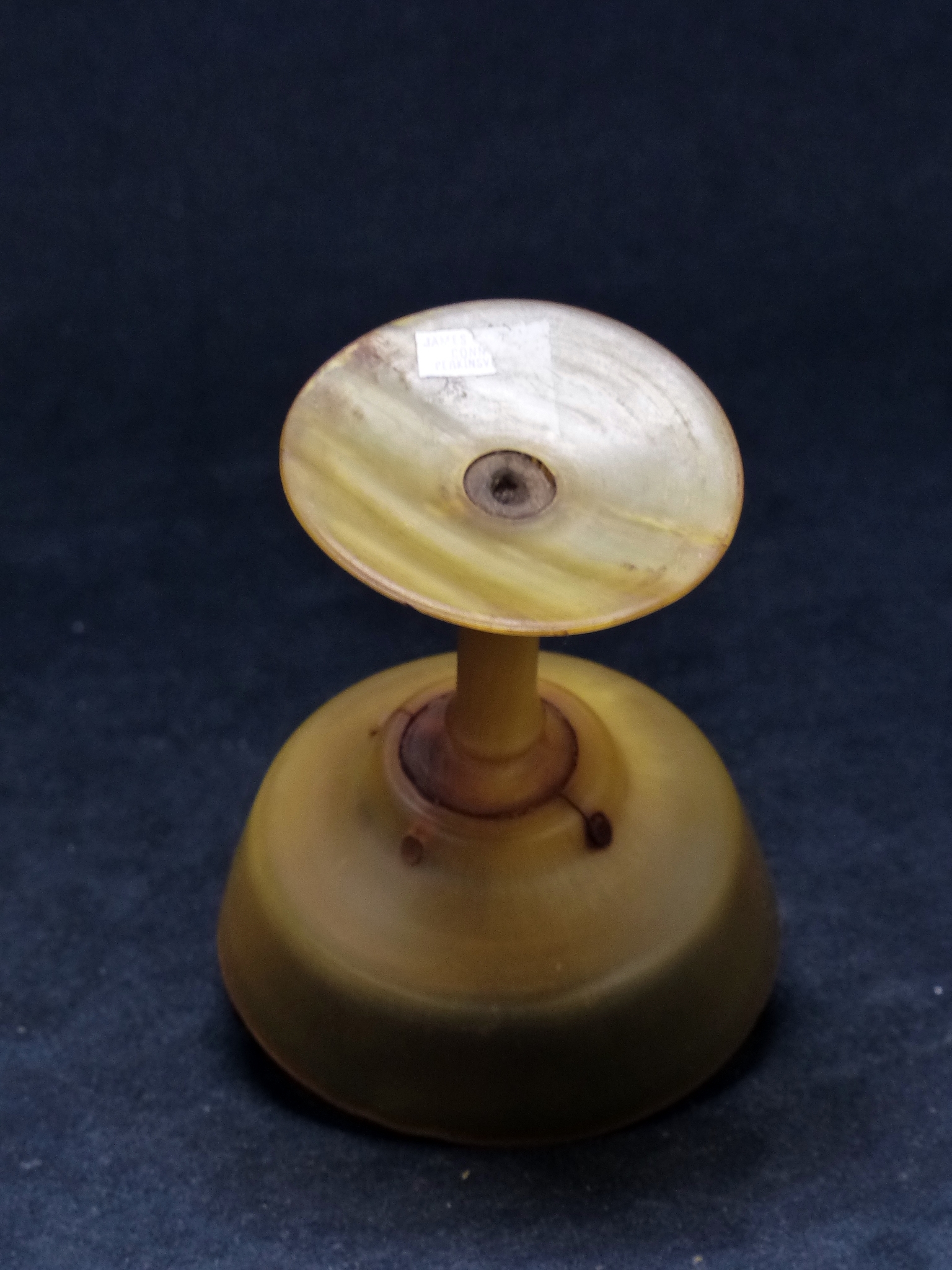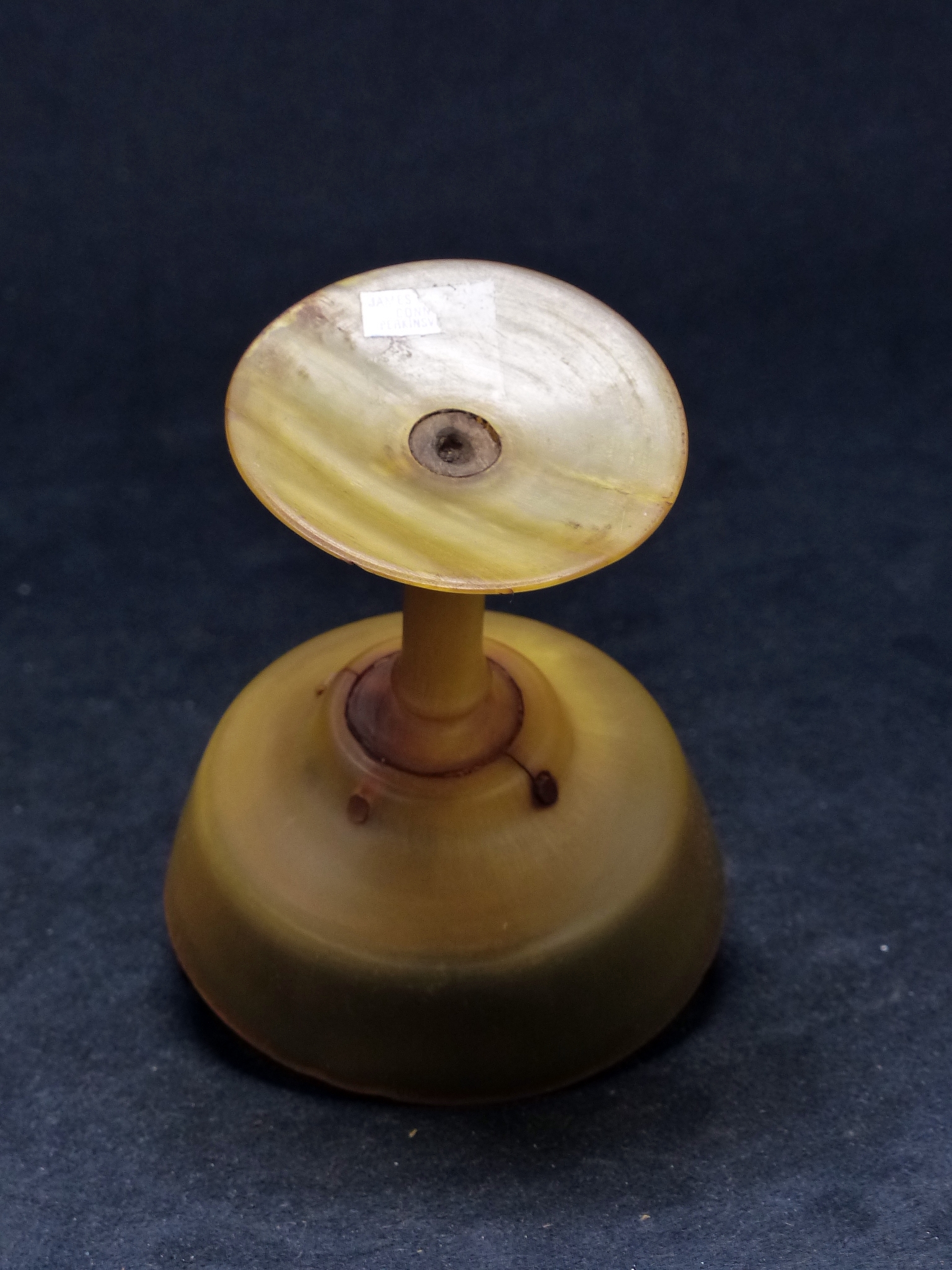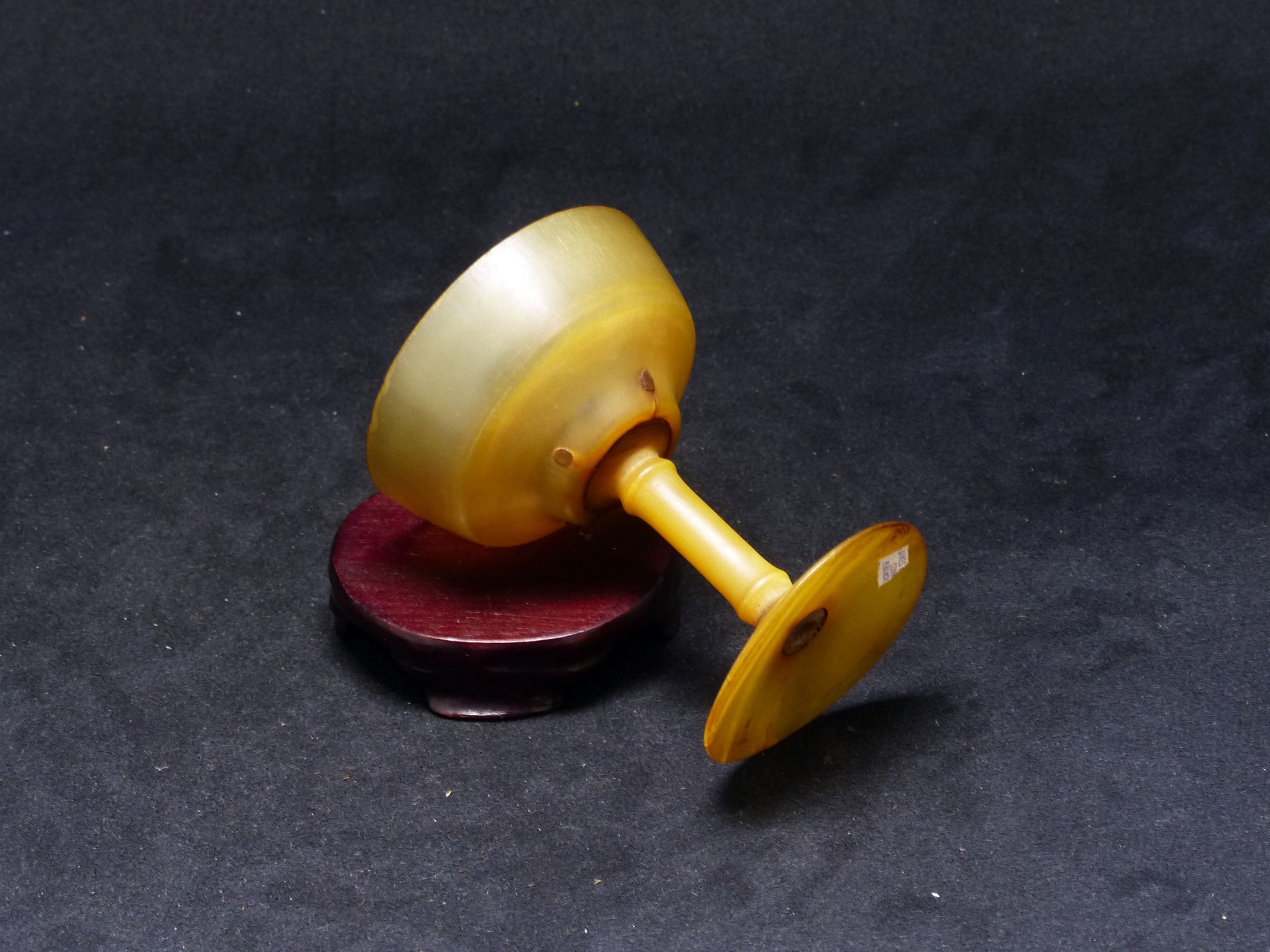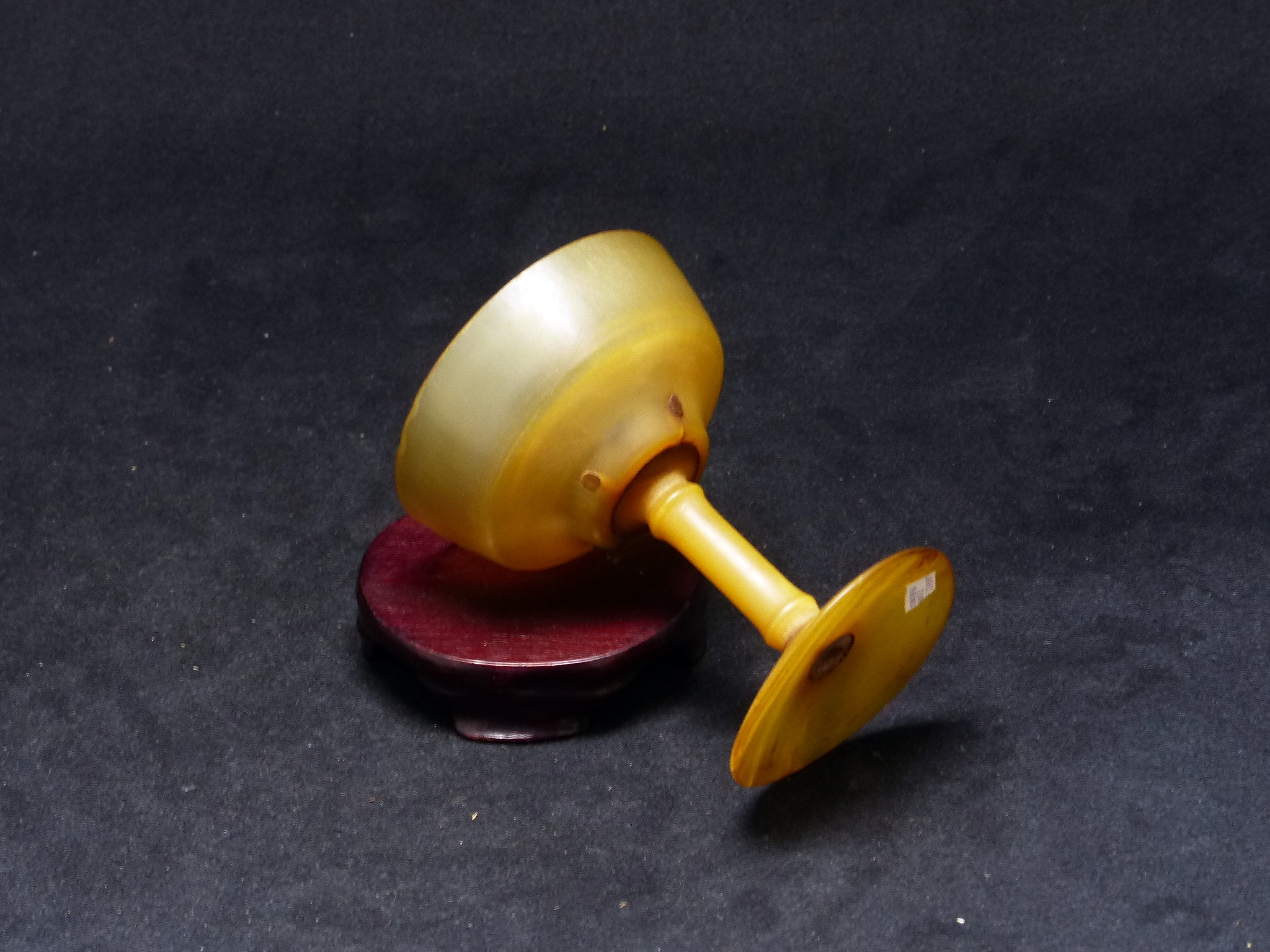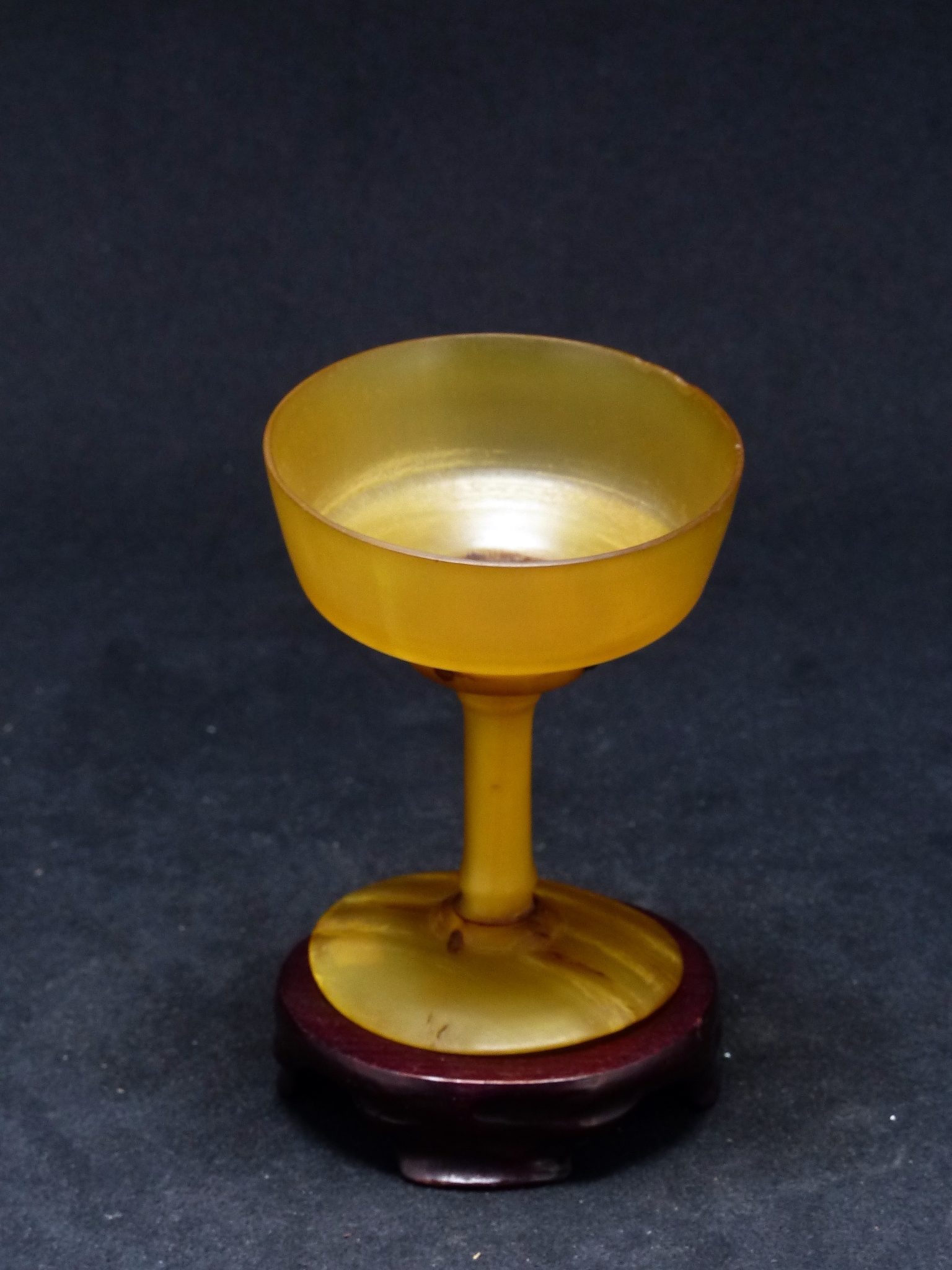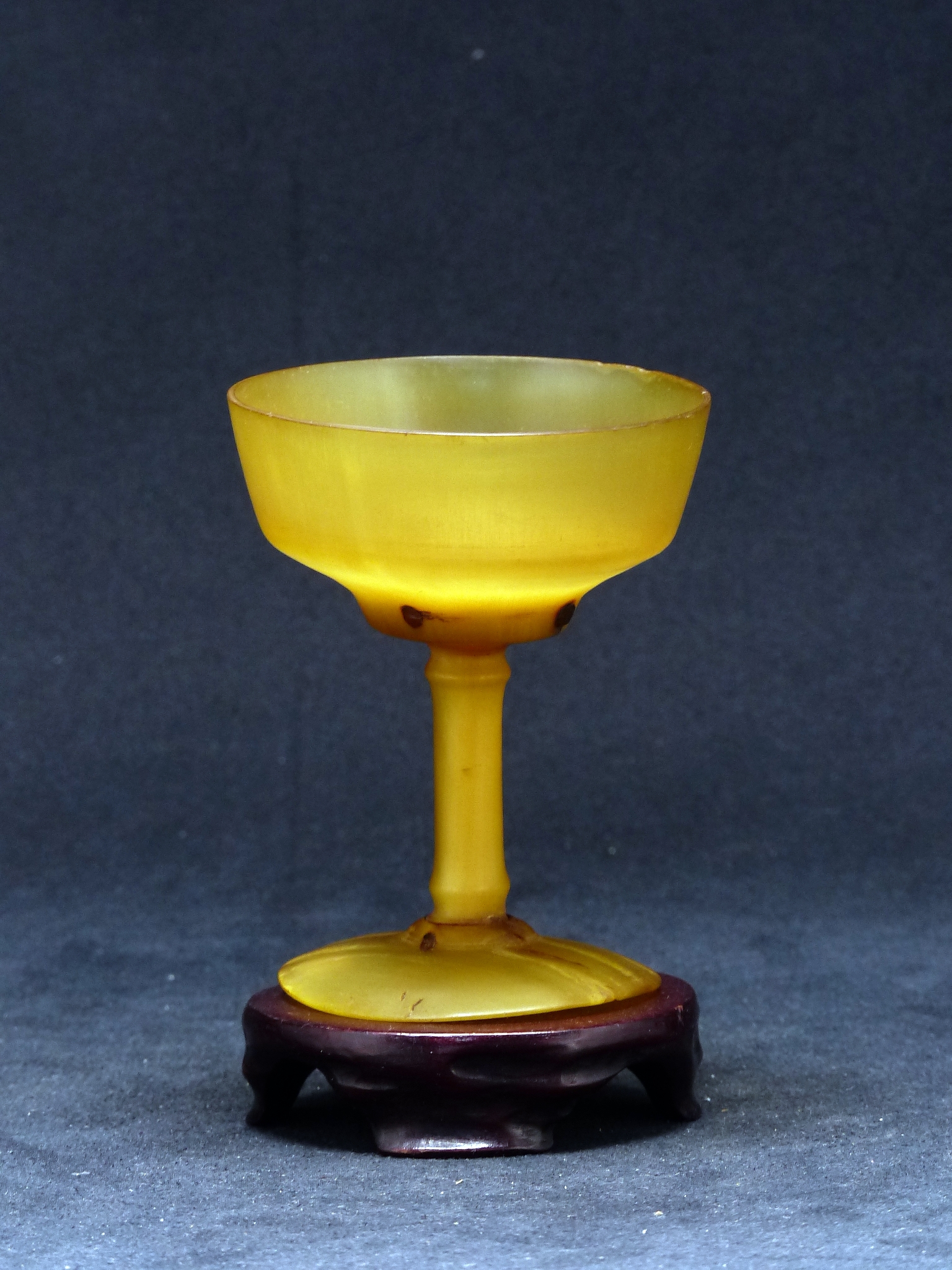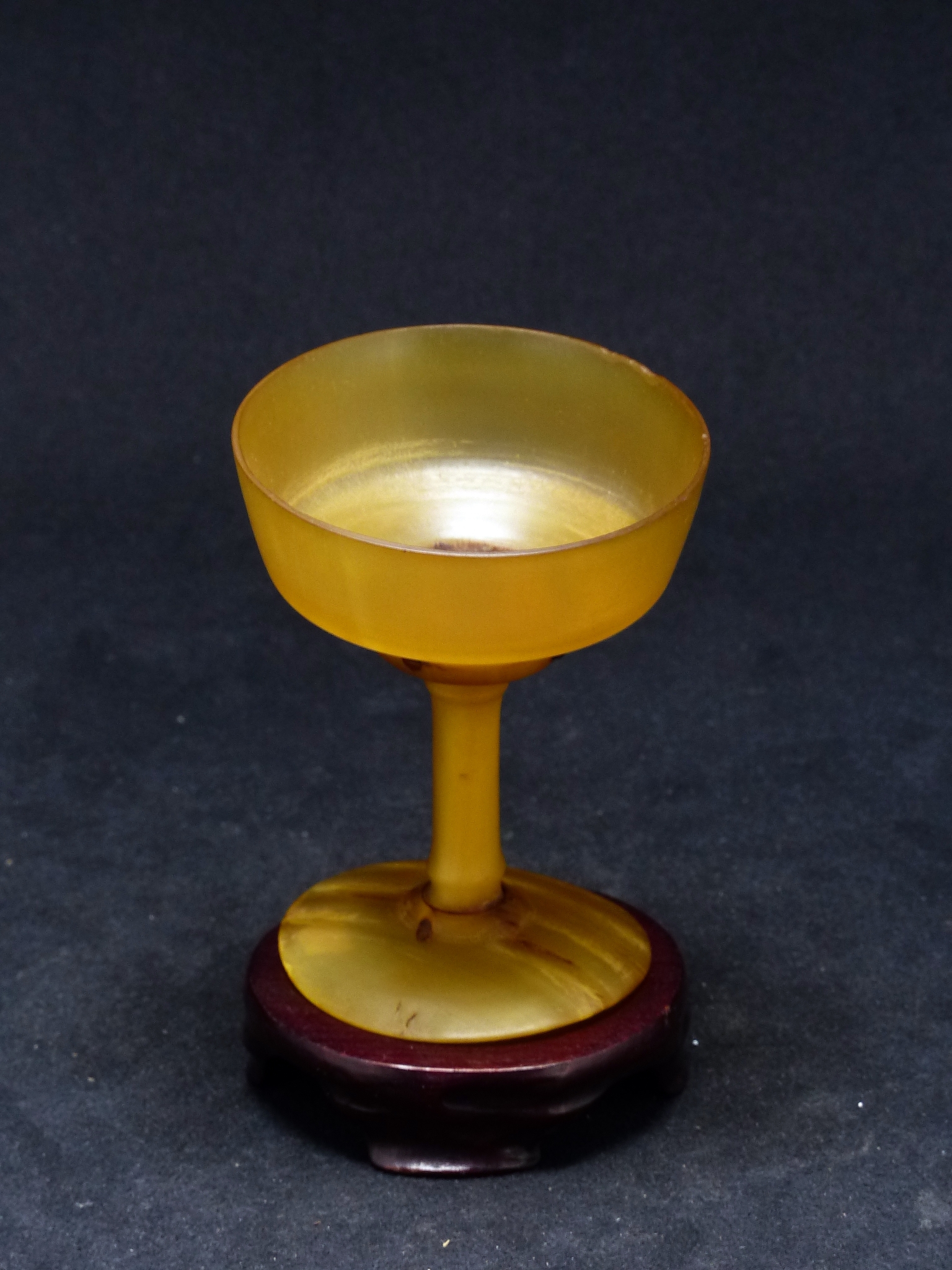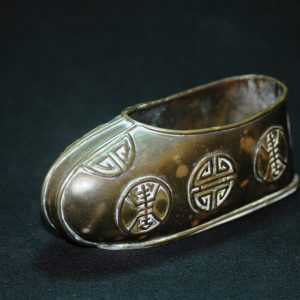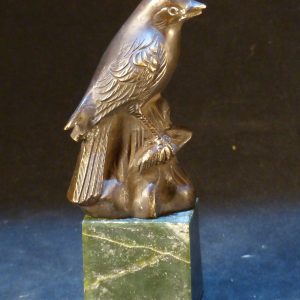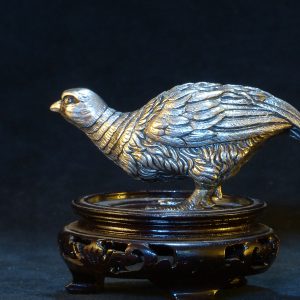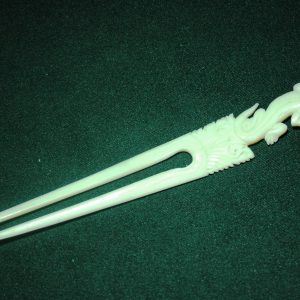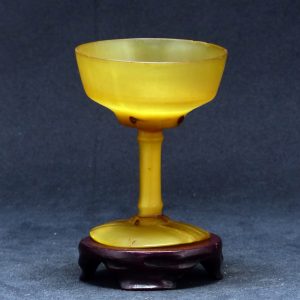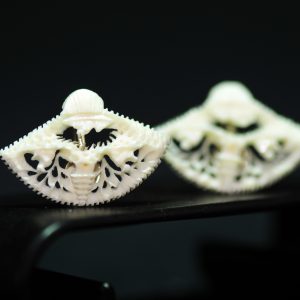Description
犀角高脚酒杯

Europe; 1700–1800
Cow horn
Bequest of Henry Francis du Pont 1960.1108
Flute
Europe; 1700–1800
Cow horn
Bequest of Henry Francis du Pont 1960.1108

United States; 1790–1840
Probably white rhinoceros horn
Bequest of Henry Francis du Pont 1961.510
Goblet or wine cup
United States; 1790–1840
Probably white rhinoceros horn
Bequest of Henry Francis du Pont 1961.510
Goblets made in organic materials typically would have been less expensive than metal, glass or ceramic drinking vessels. Cow horn was readily available and, like rhinoceros horn, required pressure, heat, and steam when shaping. The examples shown here were finished on a lathe.
Rhinoceros Horn Chalice. 德国 犀牛角喇叭型酒杯。Southern Germany. Circa 1680-1700

Turned rhinoceros horn. Round, turned foot culminating in a bowl, from which the baluster shaped shaft extends. Beaker-shaped cuppa with slightly flared brim. Height 18,8cm. Condition B. Ca. 222g.
Literature: Eugen von Philippovich. Kuriositäten/Antiquitäten. Braunschweig 1966. For this material, see pg. 460ff. For this type, see pg. 464, fig. 311.
Many of the turned objects in materials like ivory and rhinoceros horn originate from workshops in southern Germany. The turner Peter Zick von Rudolf II. of Nuremberg was even called to the royal court in Prague to teach the emperor to turn horn and bone. A rhinoceros horn chalice turned by emperor Rudolph can be seen in the national museum of Copenhagen. The inscription on it mentions, among other things, the ability of the material to repel poisons.
Since the antique era, scholars had been convinced that a poisoned liquid would bubble and fizz when poured into a cup made from this material, thus allowing it to be recognized.
It was also believed that drinks served in rhinoceros horn glasses would help combat fever.
These beliefs led to the horn being widely processed and sold as an expensive exotic medicine in European pharmacies.
Cf. Dirk Syndram. Geschirrlein aus Renotzerhorn in Dirk Syndram (HG.) Naturschätze, Kunstschätze. Bielefeld 1991. pg.52).
A Large Indian Carved Rhinoceros Horn Stemmed Goblet

DIMENSIONS
Height 14.00 cm (5.51 inches)
Depth 10.00 cm (3.94 inches)
MEDIUM
Rhinoceros Horn
A Large Indian Carved Rhinoceros Horn Stemmed Goblet
Late 18th Century / Early 19th Century
Size: 14 cm high, 10 cm dia. – 5½ ins high, 4 ins dia.
In 1525 the Mughal Emperor Babur, the founder of the Mughal dynasty in North India, wrote in his diary that he had acquired a drinking cup made from the horn of a rhinoceros. This cup found its way into the possession of Sir Hans Sloane ( 1660 – 1753 ) whose extensive collections of curiosities formed the basis of the British Museum collection. Today the cup can be seen in the celebrated King’s Gallery, in the ‘Enlightenment’ display at the British Museum.
A Rare German Turned Rhinoceros Horn Small Stemmed Cup (1600 to 1800 German)

Medium
Rhinoceros Horn
Dimensions
13.00cm high 5.00cm deep (5.12 inches high1.97 inches deep)
Provenance
Provenance: Ex Private New York collection
Literature
‘If the drink is hot and poison is present, it makes it bubble in the vessel that contains it. If the poison is cold it makes a smoke …..’
so wrote Hildegard of Bingen in the 12th century.
The Emperor Rudolf II ( 1552 – 1612 ) owned a total of 13 rhinoceros horn vessels in his great courtly kunstkammer and firmly believed that they had the power to detect the presence of poison. Even as late as 1763 an English Doctor called Brookes wrote ‘when the wine is poured therein it will rise, ferment and seem to boil; but when mixed with poison it cleaves in two’.
Description / Expertise
A Rare German Turned Rhinoceros Horn Small Stemmed Cup
Rhinoceros horn and brass inlay
Late 17th Century
Size: 13 cm high, 5 cm dia. – 5 ins high, 2 ins dia.
SOLD

![[临渊阁]天地一家春](https://www.antiquekeeper.ca/wp-content/uploads/2023/03/cropped-Asian-Art-Wallpaper-Painting3-6-1.jpg)

